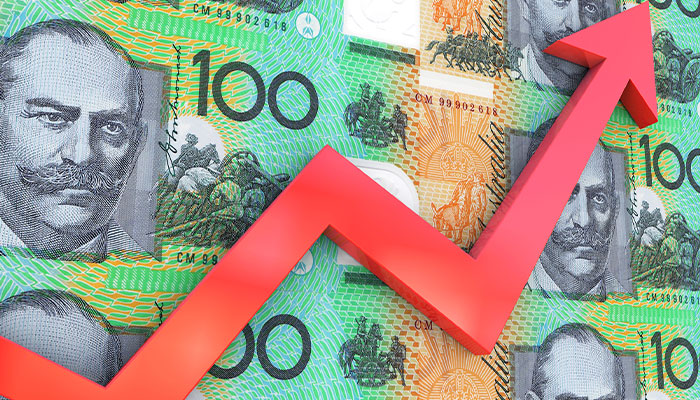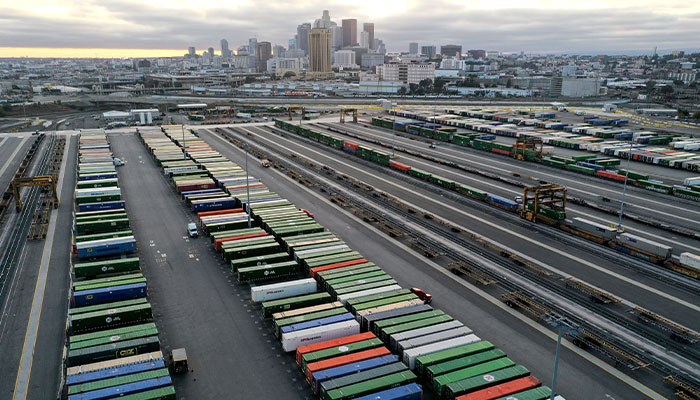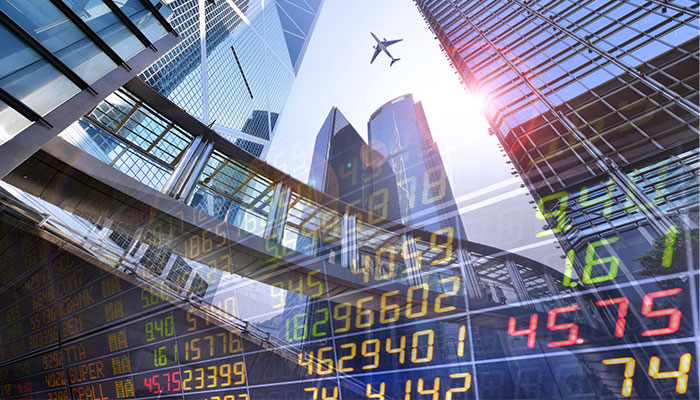Watch any recent media and the message is clear; inflation is coming back. Annual headline inflation rates have picked up globally, to 5.4 per cent in the US and 3.0 per cent in Australia, with prices of cars and some other goods rising much faster.

At the same time, economic growth is being affected by disruptions to global distribution chains, including the lingering effects of the COVID-19 virus. Has the stagflation era of the 1970s – where economic growth was weak and inflation high – come back to haunt us?
In a word – unlikely.
Supply-side factors
Inflation can be caused by either of two phenomena: supply-side factors such as the cost of oil and wage rises that are passed on by producers to their consumers, or demand-side factors as too much spending by households and businesses chases too few goods and services being produced.
Start with the supply side. Some critical input prices have increased as our economies have reopened. But much of this is just a normalisation from the weak price pressures seen in 2020 and will wash out of the inflation data in coming quarters. Oil for instance is trading around US$80 a barrel, sharply up on US$20 a year ago at the depth of the crisis but not that different from its US$60 level before the pandemic hit.
Pent-up demand for new household goods and for postponed services like haircuts is time-dated by definition. Hence, it should ease soon.
The economic recovery has also caused bottlenecks across global supply chains, which are feeding into higher prices. These are most acute in the supply of semiconductors, ports and local trucking services, and (in the US) used cars. But these pressures should subside as the high prices provide a strong incentive to producers to address the logistical impediments.
Will all this lead to a wage-price spiral, which played such an important role in the 1970s inflation era? Wages growth has picked up, most sharply in the US, though less so in Australia. But the institutional forces to support a wage-price spiral – high trade union membership, strikes and wage demands based on pay deals in other industries, and employers who can pass on cost increases given weak competitive pressures – don’t look anything like the world today.
So while there will be movement in some wages to better attract and match jobs to the new post-COVID economy – a good thing – this is unlikely to lead to a push up in wages (and inflation) to unsustainable levels.
Demand-side factors
What about demand-induced inflation given the post-lockdown boost to spending? The savings rate jumped during 2020 (from 5 to 20 per cent in Australia), and this saving is now being drawn down by everyone at the same time, with a consequent shortage of some goods and services to buy.
But pent-up demand for new household goods and for postponed services like haircuts is time-dated by definition. Hence, it should ease soon, with overall spending in the economy then falling back to pre-COVID levels.
Secular stagnation
And that is the problem, as the bigger picture we have been grappling with reasserts itself. For decades now, the world has actually been awash with excess savings rather than excess household and business spending, which has put downward pressure on inflation and interest rates, a situation dubbed ‘secular stagnation’.

Cargo halt: The economic recovery has caused bottlenecks, such as this one at a rail yard in Los Angeles, across global supply chains, which are feeding into higher prices.
While there are several factors behind this trend, the big ones seem to be the build-up of retirement funds as populations age, the rise in the income share of the (high-saving) top 1 per cent of earners, and the rapid growth in emerging Asian economies where households have a high savings rate (over 20 per cent) given gaps in those countries’ social safety nets.
At the same time, private investment intentions have been weak, in part reflecting the shift from expensive physical investment to the much cheaper information and communication technologies needed for modern business processes. If anything, the pandemic has accelerated this trend as the increased use of online ordering and working from home has led to an excess stock of offices, retail outlets and CBD infrastructure, reducing the need for new investment in those areas.
Temporary price pressures
Given that these features reflect longer-term demography and shifting technologies rather than short-term cyclical factors, they seem likely to (again) weigh on household and business spending. Perhaps as a consequence, many of the longer-run inflation expectation measures have barely shifted compared with their level in the pre-COVID period despite the recent spike in inflation.
As we saw in this week’s decision by the Reserve Bank, some of the extraordinary stimulus measures are now being reduced as our economies recover from the pandemic.
- Please explain: What is a booster shot and why do I need one?
- The story of a tiny fossil that solved an evolutionary puzzle
But it is important to remember that the pre-COVID period was not great. Interest rates were already close to zero at that time given the secular stagnation trends, and wages after inflation were barely growing as productivity growth was anaemic.
The policy trade-offs to address that situation were – and remain – tough. Low-for-longer central bank interest rates can support borrowing and spending by the private sector but at the cost of rapid housing and other asset price growth. High budget spending can offset shortfalls in private sector demand but at the cost of even higher public debt. And pursuing structural reforms to lift productivity and business dynamism are strongly resisted by the upfront losers.
Those challenges are still the main economic issues of the day, not the temporary rise in price pressures.

David Orsmond (pictured) is Professor of Economics at Macquarie Business School. He previously spent over 25 years working at the Reserve Bank of Australia and the International Monetary Fund.



